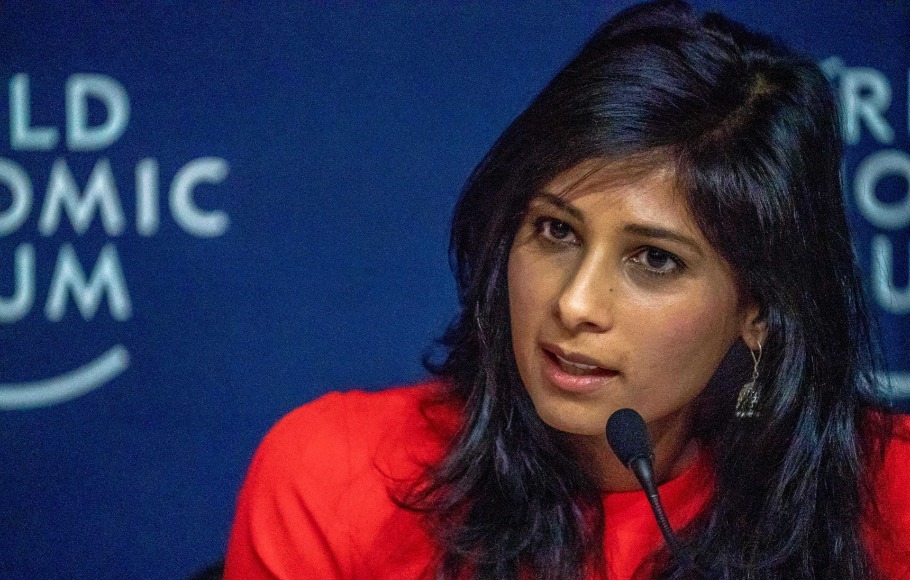
Poorer countries' lack of access to COVID vaccines tragic: Gita Gopinath
Vaccine inequity is tragic, said International Monetary Fund’s (IMF) newly-elected Indian-American chief economist Gita Gopinath, pointing out that high-income countries have vaccinated 70 per cent of their population while lower-income countries have immunised less than four per cent.

Vaccine inequity is tragic, said International Monetary Fund’s (IMF) Indian-American chief economist Gita Gopinath, pointing out that high-income countries have vaccinated 70 per cent of their population while lower-income countries have immunised less than four per cent. [She was recently named IMF’s First Deputy managing Director].
In an interview to NDTV, Gopinath said that the poorer countries’ lack of access to COVID vaccines as the Omicron threat looms large over them is tragic.
“Vaccine inequity is tragic. We are at the end of 2021 with high-income countries having vaccinated 70 per cent of their population and lower-income countries less than four per cent. The target was to vaccinate 40 per cent of the population in every country by the end of this year… 80 countries won’t meet that mark. For the vast majority, it is because they don’t have enough doses,” she said, according to the NDTV report.
Both manufacturers and developed countries need to prioritise and deliver doses to the poorer countries that require it at the earliest, she pointed out.
Gopinath’s comments came a day after she had met Indian Prime Minister Narendra Modi and against the backdrop of a rapid spread of the Omicron variant.
Further, according to Gopinath, only 18 per cent of doses have been delivered through COVAX contracts with manufacturers. “Though dose donations pledged by high-income countries were 1.5 billion… only 300 million have been delivered so far, Gopinath told NDTV.
The Covax programme was set up with the aim to ensure equitable distribution of COVIF-19 vaccines globally. The programme was to deliver vaccines to 92 low-and-middle-income countries that include several countries in Asia and a significant number of African and Oceanic nations whose governments would otherwise not be able to buy the required number of doses.
Although South Africa, where Omicron was first detected, is not currently on the list of countries receiving COVID-19 vaccine doses under the COVAX scheme, neighbouring nations like Eswatini and Tanzania, which have reported Omicron cases and from where people are traveling to India, are on the list.
Gopinath’s view was echoed by the head of the UN-backed vaccine alliance Gavi, which is trying to reach COVID-19 vaccines to developing countries. Gavi chief executive Dr. Seth Berkley warned that any new hoarding by rich countries triggered by fears over the Omicron variant, could lead to “Inequity 2.0”. Rich countries were giving booster doses to people in their country who were not a high risk of getting COVID-19, he said, according to media reports.
Big demand for booster doses
On the big demand for booster doses which has been aggravated by the heavily mutated Omicron, Gopinath said in the interview that she was worried that this might affect supplies to low-income countries. She urged developed countries not to restrain export of vaccines and medical equipment.The IMF was still closely tracking developments on the Omicron front, but had not yet reached a conclusion on its impact on the world, she said.
Despite the WHO’s statement that there is no definite proof that booster doses can counter the new Omicron variant, governments of many developed nations have offered this to their citizens. However, this demand for booster doses may lead to more stockpiling of doses at the expense of people in poorer countries who have not received even one dose.
In India, which has reported over 60 Omicron cases so far, booster doses have not yet been officially adopted by the Indian government.
The Omicron variant is believed to have 50 mutations, of which more than 30 are on the spike protein that is the target of current vaccines.

